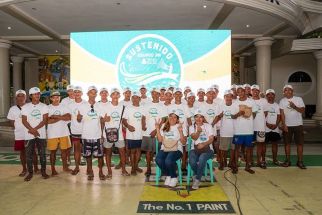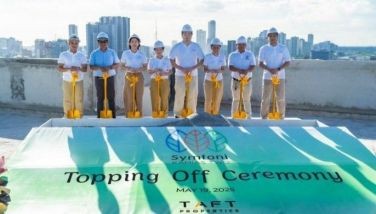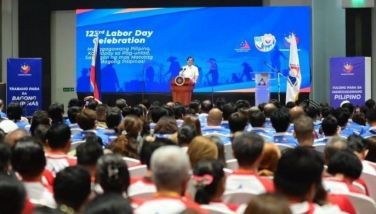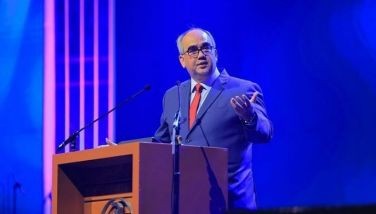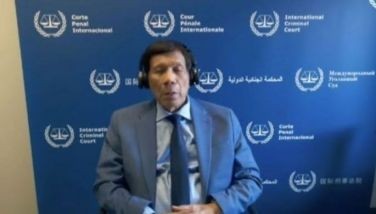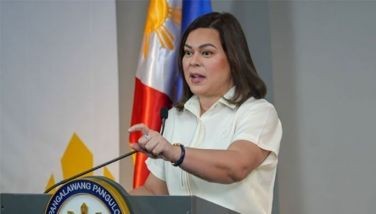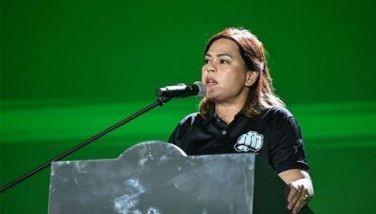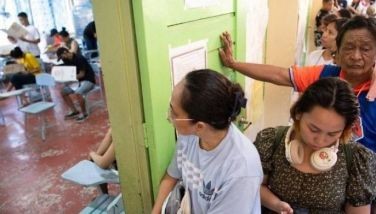‘Birds of Prey’

That is the English translation of National Artist Amado V. Hernandez’s first novel, “Mga Ibong Mandaragit.” This novel will be the second book among the Philippine titles in the South East Asian Classics series of Penguin Random House in Singapore. The first Philippine title is “Radiance and Sunrise,” my English translation of “Banaag at Sikat,” the monumental novel by Lope K. Santos published in 1906. Penguin Books has commissioned me to translate these two books in English, as well as the second novel of Hernandez, “Luha ng Buwaya,” which I will translate to “Crocodile Tears.” I will work on this novel after I have finished translating “Birds of Prey.”
A thread binds Santos and Hernandez. The former was a teacher of the latter, in the true-and-tested tradition of the teacher as mentor and master of the apprentice. Hernandez said he owed much of his literary training to Santos, who fought long and hard for the institution of Tagalog (Filipino) as the national language. Santos was a crusading newspaperman whose novel rang with socialist, even anarchic ideas, to shield the country against the rising tide of American imperialism.
The same anti-colonial and pro-people stands are found in the works of Hernandez, which consisted of poetry, essays, short stories and novels. He was born on Sept. 13, 1903, in Tondo, Manila, the cradle of heroes and nationalists. He began his career in journalism in the 1920s when the initial massive Filipino resistance against US military rule had begun to ebb. He became the editor of the Manila Daily Mabuhay from 1932 to 1934. In 1939, he won the Commonwealth Literary Award for “Pilipinas,” a nationalist historical epic. In 1940, his collection of mainly traditional poems, “Kayumanggi,” won another Commonwealth Literary Award.
During the Japanese occupation of the Philippines (1942-45), Hernandez served as an intelligence officer for the underground guerilla resistance. He distilled this experience in what the critic, Dr. Epifanio San Juan Jr., calls “Hernandez’s major novel of neocolonial dependency and revolt, ‘Mga Ibong Mandaragit.’” Some of the most eloquent passages in the novel deal with the guerrilla leader, Mando, and his exploits in the Sierra Madre Mountains against the rampaging forces of the Japanese Imperial Army. “Mga Ibong Mandaragit” is a novel in the mold of Rizal’s “Noli Me Tangere” and “El Filibusterismo.” In fact, it begins where the latter ends: with Mando’s retrieval of the treasure chest of jewelry that Padre Florentino had thrown into the sea.
After the war, Hernandez became a true public intellectual. He organized the Philippine Newspaper Guild in 1945; afterward, he ran for councilor of Manila and won twice. He spoke out on national issues as an elected councilor of Manila in 1945-46 and 1948-51. He later became the president of the Congress of Labor Organizations (1947), the largest federation of militant trade unions in the country. Slowly, the politics of Hernandez changed. San Juan noted that “here, he graduated from the romantic reformism of his early years to become a national-democratic militant.”
Ironically, the independence of the Philippines in 1946 only deepened the poverty in the land. The feudal system of land ownership allowed the landlords to exploit the peasants, while pro-capitalist laws did the same to the workers. The Huk uprising flamed in the late 1940s and early 1950s. True to form as an artist of the people, Hernandez wrote about the sociopolitical crisis of the country from the 1930s to the 1950s. His works included his second novel, the allegorical “Luha ng Buwaya,” and the epic poem “Bayang Malaya,” which won the prestigious Balagtas Memorial Award.
Tarred and feathered during the Cold War, Hernandez was arrested on Jan. 26, 1951 and accused of abetting the Communist-led uprising. He was imprisoned for five years and six months, shunted from one military camp to another. They made him stay in smelly and dingy quarters to break his spirit; only a handspan of sky could be seen from the tiny window of his cell.
But like Praomedya Anana Toer of Indonesia, another excellent writer accused of being a Communist and thrown into jail, the writer’s spirit was not broken. Hernandez took pen and paper and wrote poems dipped in acid. This led to a sheaf of poems called “Isang Dipang Langit” and the play he called “Muntinlupa,” named after the town where the National Penitentiary was located.
Put on a critical weighing scale, Dr. San Juan said that Hernandez’s “singular achievement is what I would call the invention of the Filipino ‘concrete universal,’ the dialectical representation of socially typical situations that project the contradictions of ordinary life in a neocolonial formation, with its peculiar idioms and idiosyncratic nuances. Stories like ‘Langaw Sa Isang Basong Gatas’ and poems like ‘Mga Muog ng Uri,’ ‘Bartolina,’ ‘Ang Dalaw’ and ‘Kung Tuyo na ang Luha Mo’ exemplify this dialectical poetics….”
From 1956 to 1960, Hernandez wrote countless stories under various pseudonyms for the leading weekly, Liwayway. Like the Russian doctor and short-story writer Anton Chekhov, he wrote plenty and he wrote well, to keep body and soul together. He also wrote columns for the daily newspaper, Taliba and edited the radical newspapers Ang Makabayan (1956-58) and Ang Masa (1967-70).
He later became a major voice in the Afro-Asian Writers’ Emergency Conference in Beijing, China in June-July 1966, and was part of the International War Crimes Tribunal organized by Bertrand Russell and Jean-Paul Sartre in November 1966. One of the memorable photos of Hernandez that I saw at the Ateneo Archives was of him wearing 1960s-style sunglasses, beaming beside Jean-Paul Sartre, who had the same pair of sunglasses.
A grateful country later accorded him its highest honors: the Republic Cultural Heritage Award (1962) and National Artist Award given posthumously in 1973. Up to the day (March 24, 1970) he died, Hernandez was involved as a leading protagonist in mass rallies against imperialism and feudalism. He raged against the dying of the light, and it would serve us well to read the burning words he wrote.
“Mga Ibong Mandaragit” is available in Shopee while “Luha ng Buwaya” is available at the Ateneo de Manila University Press website.
* * *
Email: danton.lodestar@gmail.com.The author’s novel, “Riverrun,” has been published by Penguin Random House.
- Latest
- Trending









